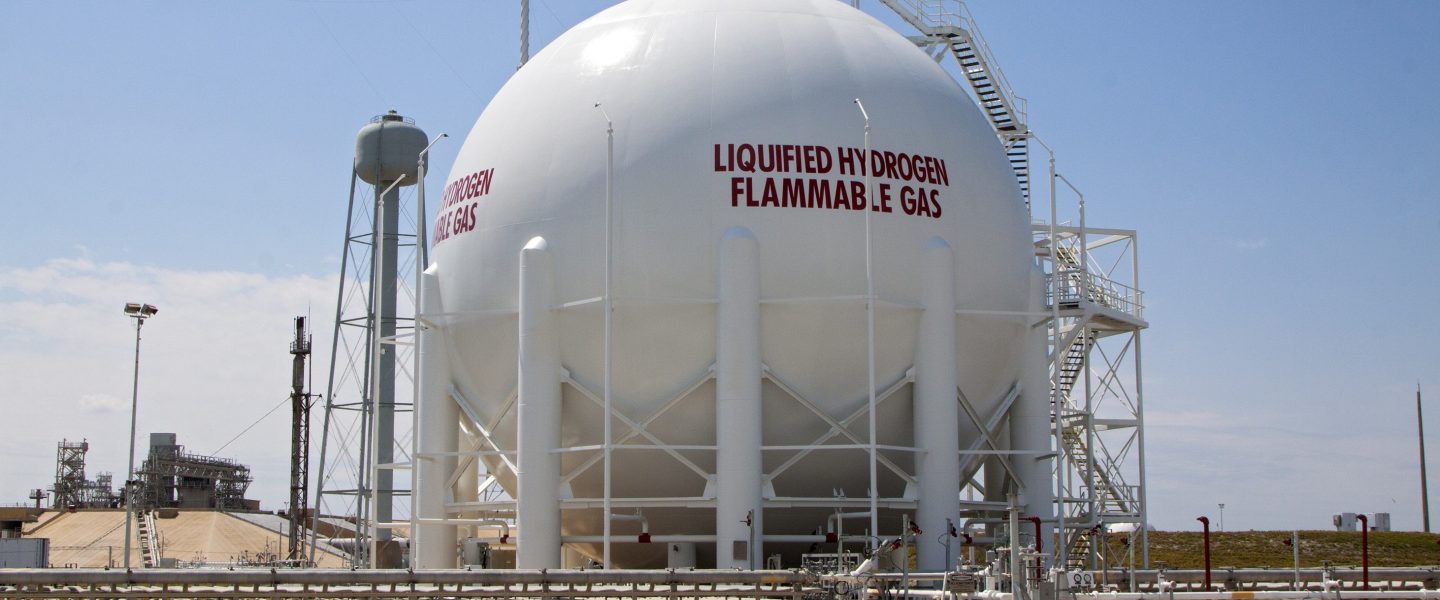 UCF’s FSEC has a long history of liquid hydrogen storage research. An early project involved developing a thermal model to examine the thermal performance of the at Kennedy Space Center’s (KSC) Launch Pad B liquid hydrogen (LH2) tank and measure the experimental parameters needed for modeling the granular effects of using glass bubbles as tank insulation. A detailed 3-D model was developed to simulate thermal performance of the tank with a void. The model was validated against measured data, including boil-off rates, infrared (IR) images, point temperature and heat flux measurements. A parametric study was performed after validation to investigate which solutions were feasible for future tank renovation. Preliminary recommendations from thermal simulations were made to KSC. Experimental data from 3M Corp were also sent to KSC to support their modeling efforts.
UCF’s FSEC has a long history of liquid hydrogen storage research. An early project involved developing a thermal model to examine the thermal performance of the at Kennedy Space Center’s (KSC) Launch Pad B liquid hydrogen (LH2) tank and measure the experimental parameters needed for modeling the granular effects of using glass bubbles as tank insulation. A detailed 3-D model was developed to simulate thermal performance of the tank with a void. The model was validated against measured data, including boil-off rates, infrared (IR) images, point temperature and heat flux measurements. A parametric study was performed after validation to investigate which solutions were feasible for future tank renovation. Preliminary recommendations from thermal simulations were made to KSC. Experimental data from 3M Corp were also sent to KSC to support their modeling efforts.
Due to heat leaks, liquid hydrogen in storage tanks can vaporize and cause the tank to become over-pressurized. In order to reduce the tank pressure, the vaporized hydrogen has to be released into the atmosphere, therefore losing valuable hydrogen. The boil-off costed NASA-KSC about $1 million annually. The main challenge, then, was keeping heat leaks to a minimum in liquid hydrogen storage tanks. Insulation systems are used to reduce heat leaks. The objectives of this project were:
- Develop a basis for evaluating hydrogen storage insulation systems
- Evaluate innovative and state-of-the-art insulation systems used in hydrogen storage to minimize heat leaks.
The study concentrated on development of general equations of thermal conductivities for different insulation systems at various temperatures and pressures. The models were validated against measured data under liquid nitrogen (LN2) conditions and can be also expanded for use with LH2 boundaries. Evaluation was performed using the developed model. The study found that combination of different insulation materials and multi-layer insulation (MLI) has no benefit. The vacuum level is an important factor for selecting insulation materials.
The hydrogen liquefaction expertise of UCF researchers was later applied to develop small-scale hydrogen fuel tanks to optimize boil-off rate and minimize weight of lightweight fuel cell in unmanned aerial vehicles (UAVs). This work was funded by Korea Advanced Institute of Science and Technology (KAIST).
Years of Research: 2002-2014
Sponsored by: NASA, Korea Advanced Institute of Science and Technology (KAIST)